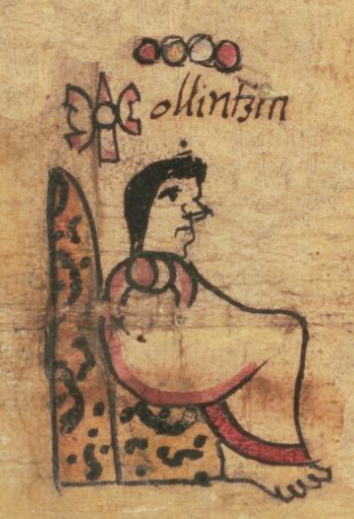olin (CQ)
This element for movement or earthquake (olin) has been carved from the compound personal name Nahui Olintzin. This glyph is red and white. It has a central, vertical, pointed shape with a small circle in the middle. On either side of this axis are what appear like butterfly wings. These shapes vaguely resemble the more X-like shape of the olin glyphs in the Codex Mendoza.
Stephanie Wood
Olin was a day name in the 260-day divinatory calendar called the tonalpohualli in Nahuatl. This calendar had a role in various Mesoamerican religions, including the Mixtec.
Stephanie Wood
covers ruling men and women of Tecamachalco through 1593
earthquakes, temblores, movement, movimiento, days, días, fechas, dates, calendars, calendarios

olin, movement, earthquake, https://nahuatl.wired-humanities.org/content/olin
el movimiento, un signo calendárico
The Codex Quetzalecatzin, aka Mapa de Ecatepec-Huitziltepec, Codex Ehecatepec-Huitziltepec, or Charles Ratton Codex. Library of Congress. https://www.loc.gov/item/2017590521/
The Library of Congress, current custodian of this pictorial Mexican manuscript, hosts a digital version online. It is not copyright protected.



